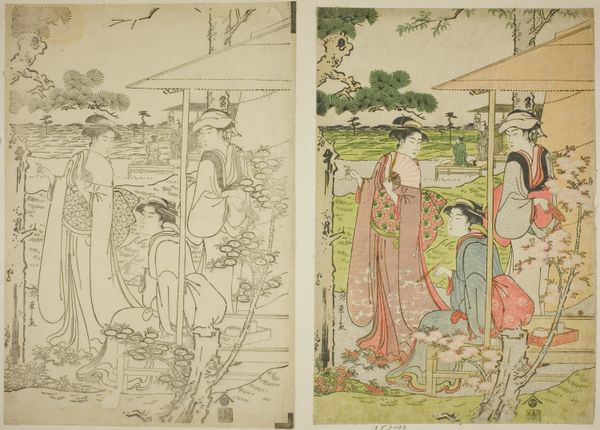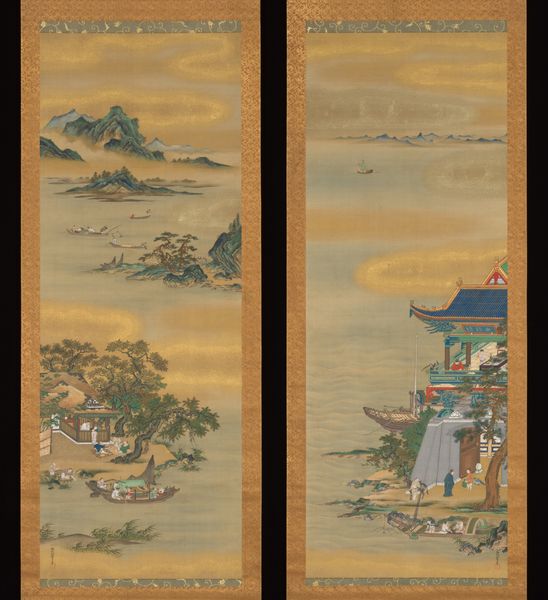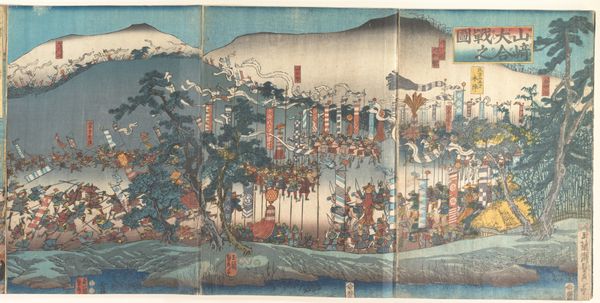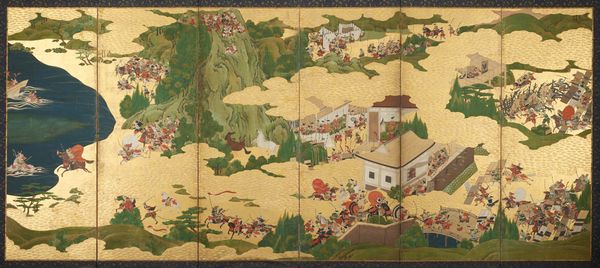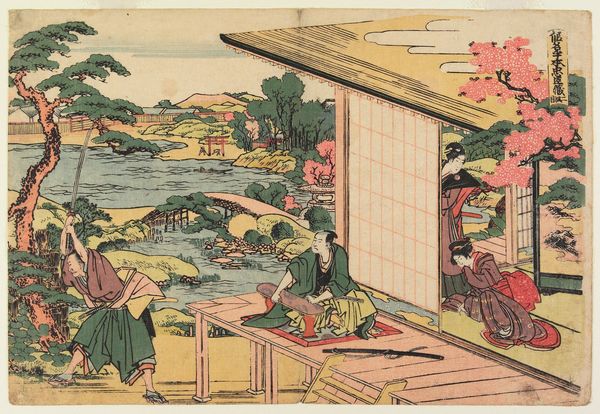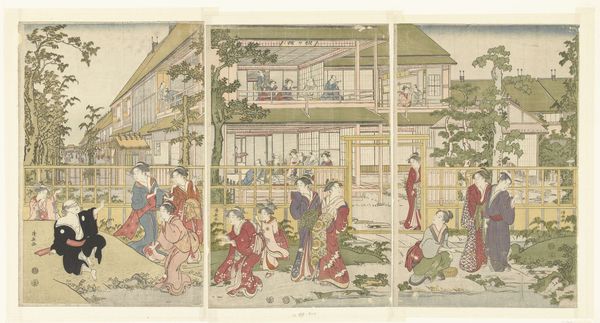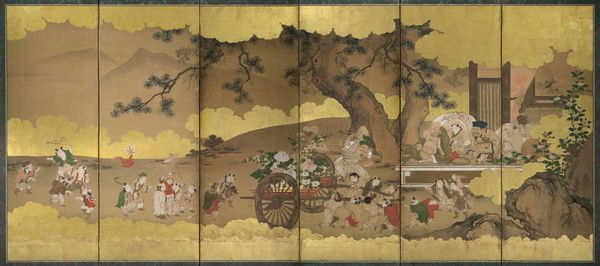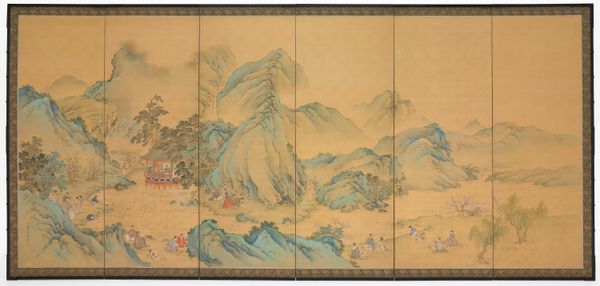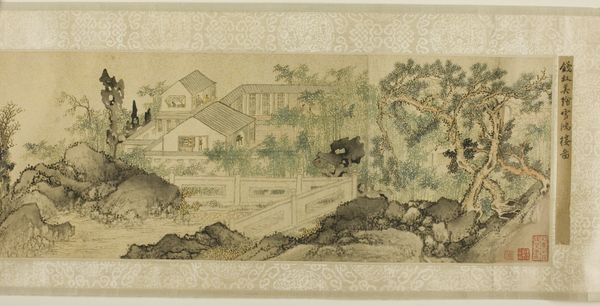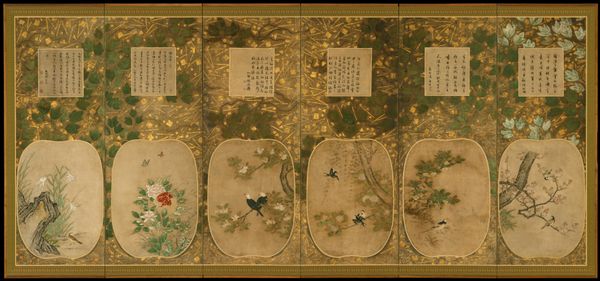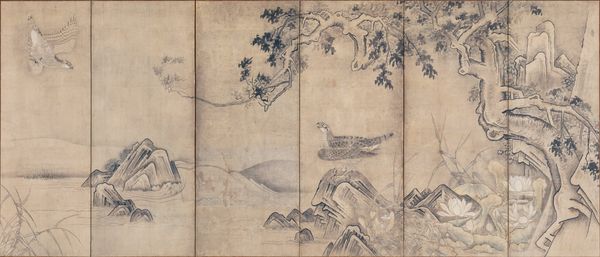
painting, watercolor, ink
#
water colours
#
painting
#
asian-art
#
landscape
#
figuration
#
watercolor
#
ink
#
watercolor
Dimensions: 35 1/2 × 11 3/4 in. (90.17 × 29.85 cm) (image, each image panel)67 3/4 × 137 × 5/8 in. (172.09 × 347.98 × 1.59 cm) (outer frame)
Copyright: Public Domain
Curator: Here we have an exquisite set of screen paintings titled "One Hundred Children at Play," dating from the late 19th century. They're rendered in delicate ink and watercolor. Editor: My first impression is one of ordered chaos! So many tiny figures inhabiting a landscape of architectural precision and soft natural forms. There is a clear intentionality with which the materials are organized on the canvas. Curator: The sheer number of children is significant, not merely a decorative element. In traditional East Asian art, many children signify blessings, good fortune, and, importantly, continuation of the family line. Each child appears to be engaged in a different game or activity. Editor: Interesting. So this wasn't some on-the-spot reportage; the screen doesn't document children coincidentally at play but is assembled using existing social knowledge about this visual motif. Are we looking at paper or silk, here? The way the ink bleeds subtly makes me curious about the base. And who would've had the economic freedom to procure this many mineral pigments? Curator: Likely silk, judging from the luminosity and subtle texture. And you're right to consider the social dimension of this artwork's production and patronage. The level of detail and materials suggest a wealthy patron commissioning skilled artists, steeped in symbolic traditions. Also the arrangement of figures, with the literati elegantly enjoying scenery speaks to themes beyond mere propagation of a lineage. Editor: Right. How do those choices subtly reify or reinforce existing status relations and cultural structures? How much did gender or age play into the organization of that production? Also, from a formal perspective, I can appreciate the level of technique that would go into painting something like this. Each repeated design represents a unit of labour invested in the social fabric, to borrow an orientalist's tone for a moment. Curator: Precisely. So, in viewing "One Hundred Children at Play," we see not only aesthetic beauty but a complex tapestry woven from social desires, cultural symbols, and the labor involved in the act of creation itself. Editor: It also reminds us how art serves not just as representation, but active material within ongoing social dynamics. Thanks to this deeper understanding, it looks a lot less chaotic to me.
Comments
minneapolisinstituteofart almost 2 years ago
⋮
This folding screen draws upon a tradition of depicting an abundance of children, especially boys, playing in luxurious palace-garden settings, a convention first developed by Chinese artists in the 900s. Since then, such images have appeared frequently on everything from paintings to porcelain vases and clothing, not only in China but in places like Korea and Japan that are within the sphere of Chinese cultural influence. They represented the hopes for the birth of children and for their successes. A screen like this one, which shows numerous boys engaged in the same types of playtime activities as those seen in Chinese paintings from hundreds of years before, might have been used as an optimistic backdrop for a New Year’s party or some other celebratory gathering.
Join the conversation
Join millions of artists and users on Artera today and experience the ultimate creative platform.


